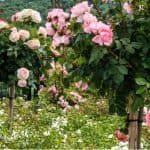Last updated on March 31st, 2022
Our site is reader supported, this means we may earn a small commission from Amazon and other affiliates when you buy through links on our site.
Succulents are taking over all manner of gardens, both indoors and out. Succulents thrive in dry climates like Central America and Africa where there is very little humidity. They do so successfully by storing water in their leaves, and this enables them to withstand countless hours in direct sunlight without a great deal of water.
They are well known for being low maintenance and for living quite a long time, which makes them perfect for anyone who doesn’t have a lot of free time to dedicate to the cultivation of an exquisite garden, or those who are at work all day and unable to check on their plants regularly. They add structure and vibrancy to any area. That being said, there are some varieties that prefer an indoor location and others that do better in an outdoor location. You can find a shape, style, and colour to fit your home or garden with ease.
Indoor succulents are best grown at room temperature with direct sunlight, so they do well when placed near a window in an area that is very dry with little humidity. Outdoor succulents can be grown directly in the garden or in containers, and they do require a bit more direct sunlight compared to indoor varieties. The most important thing when growing outdoor varieties is to give them adequate sunlight.
See our top 10 alpine rockery plants for outdoors
Below are twenty succulents with pictures for growing indoors or outdoors
1. Sedum morganianum – Burro’s Tail
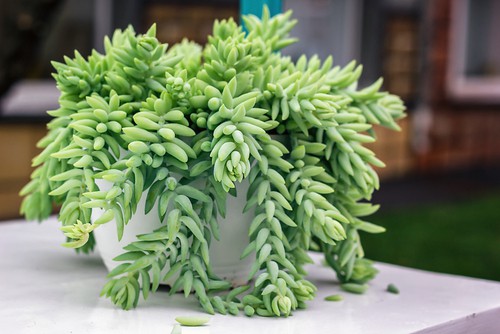
More commonly known as the ‘Burro’s Tail’ or the ‘Donkey Tail’ plant, this is one of the easiest to propagate and maintain, which is why many people keep it as a houseplant. The plant grows up to 12cm tall and the growth takes on the shape of a tail, hence the nickname.
2. Euphorbia milii – Crown of Thorns
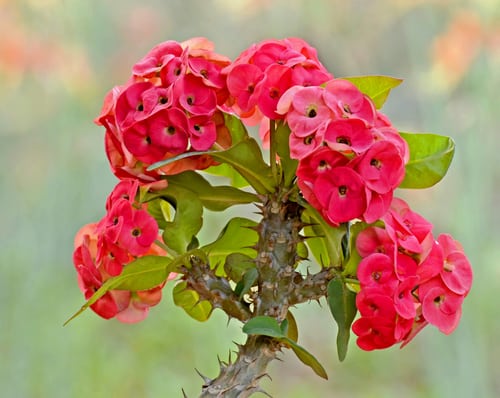
For a dry indoor room, you can put this succulent near a window and it will thrive, as long as the window gets between 3 and 4 hours of sunlight. This is a very tolerant plant in terms of water requirements. If you miss a few waterings here or there, don’t worry, it will do just fine as long as you don’t let the soil dry out completely.
3. Kalanchoe blossfeldiana – Flaming Katy
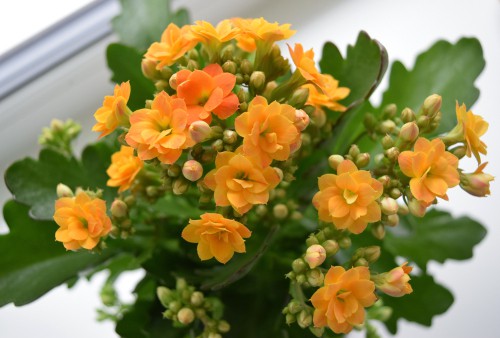
If you have a warm indoor area, this is a beautiful plant to grow. It prefers warmer temperatures and is very sensitive to cold, so you definitely want to keep this one growing in the house. It does best in clay pots, and if it’s given between 8 and 10 hours of sunlight, it will produce buds and flowers that come in a variety of colours, ranging from dark red to gold all the way to white.
4. Crassula ovata – Jade Plant
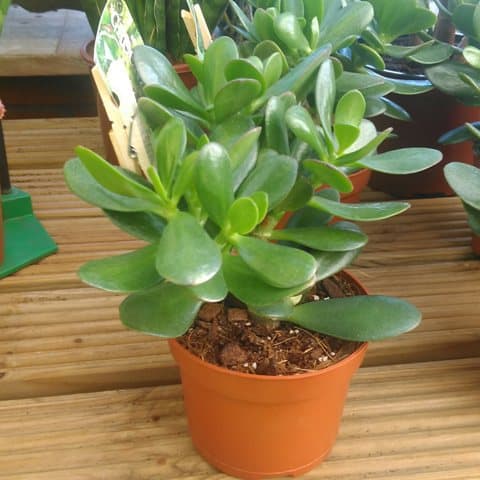
The Jade Plant grows similarly to a Bonsai, with a thick trunk and smaller branches that give it the appearance of a miniature tree. It is actually a succulent that has dark green leaves that grow in the shape of an oval and eventually develop a red tip.
Learn more about growing Jade plants in this guide
5. Aloe Vera
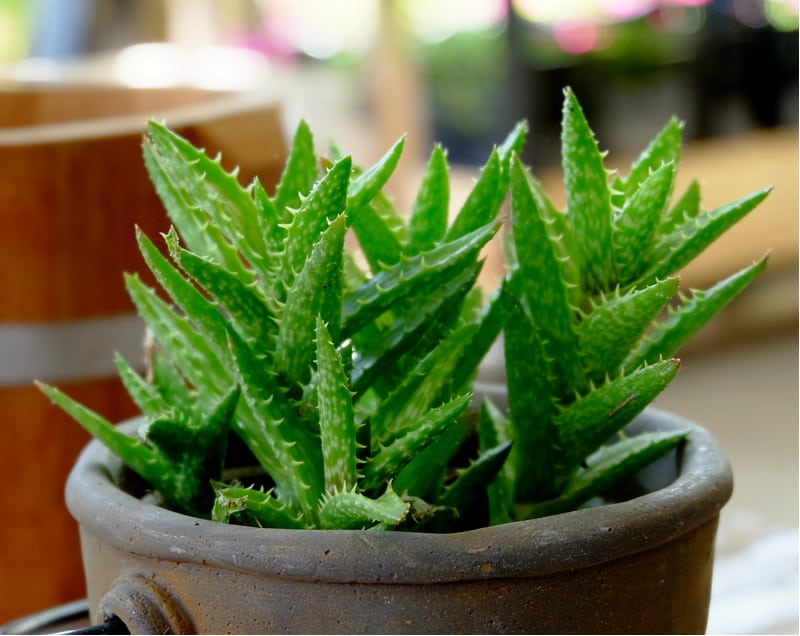
Aloe vera is heavily regarded for its medical benefits, so it’s handy to have around the house the next time you get a sunburn. You can, of course, use it for decorative purposes indoors. The leaves have a grey-green colour with spots of whites, and you can easily break off a leaf and apply the gel inside to help treat scrapes and burns.
Learn more about growing Aloe Vera plants in our growing guide
6. Kalanchoe tomentosa – Panda Plant
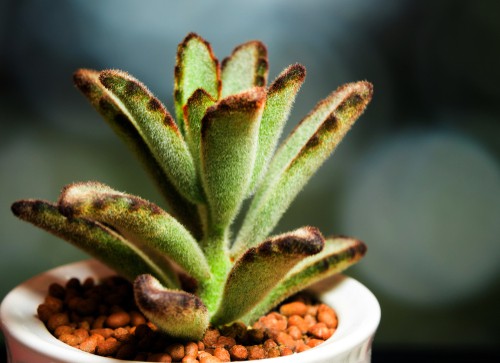
One of the more interesting indoor succulents, the ‘Panda Plant’ has very fuzzy leaves that are marked by brownish-red edges, hence the name. It is very small with a soft texture and does well in hanging planters indoors.
7. Mammillaria crinita – Pincushion Cactus
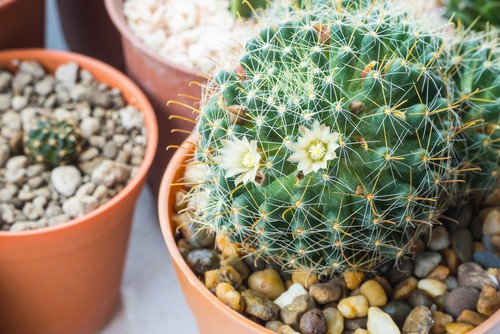
This succulent is called the ‘Pin Cushion Cactus’ because it has lots of pointy spikes. It has two black features that stick out. It won’t grow very large, but it does have vibrant, colourful flowers that make any indoor space a tiny oasis.
8. Sedum spurium – Roseum
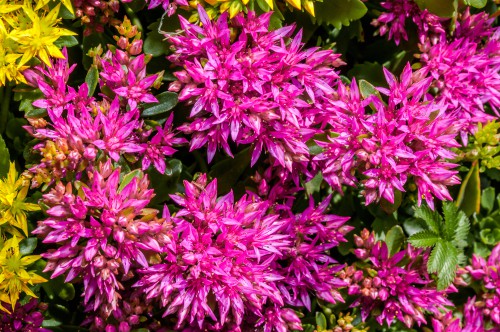
This is a very low growing succulent that doesn’t get more than 15cm tall on average. It grows very quickly in containers and thrives if you have it placed on a windowsill. During the summer it will develop clusters of small star-shaped flowers that are pink in colour and add a beautiful burst of texture and colour to your indoor area. It prefers full sun and partial shade, which is why a windowsill is best.
9. Sanseveria trifasciata – Snake Plant
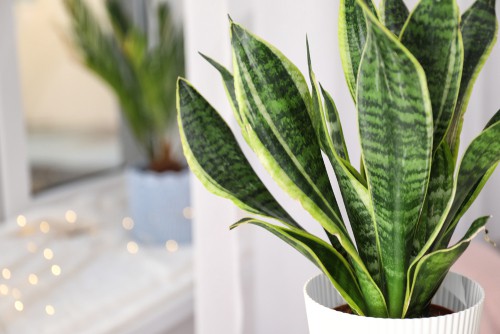
The ‘Snake Plant’ is native to Africa and is one of the easiest succulents to have in your home. You can neglect it for extended amounts of time, and it will still look brand new. It offers variegated leaves with multiple shades of green and can tolerate almost all indoor conditions, including very little water and low light. This is one of the plants that NASA suggests for improving air quality in your home.
10. Haworthia fasciata – Zebra Plant
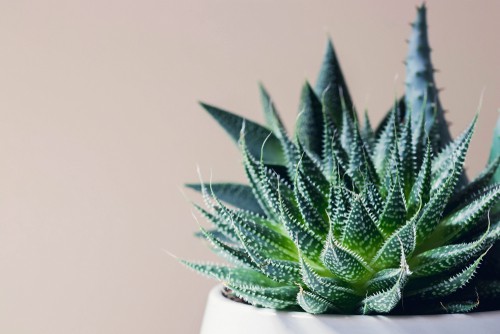
This is a beautiful houseplant that doesn’t require much in terms of care. The leaves produce white variegated stripes, and they stick out from all directions, which is why it’s called a ‘Zebra Plant’. It can grow quite small, no more than 12-15cm tall and wide. This plant has very shallow roots, which is why it does better in small pots indoors. For about one week a year, you will get bright, yellow flowers.
11. Sempervivum tectorum – Hens-and-Chicks
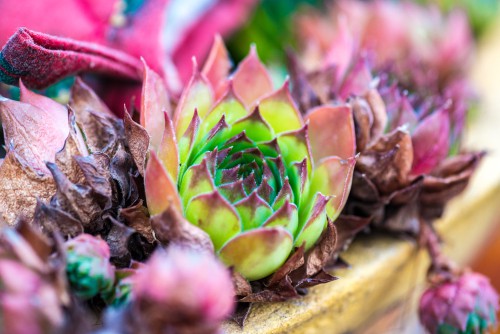
As a Sempervivum, this plant will grow for quite some time. It propagates quickly and produces lots of offshoots, which is why it’s called the hen and chick variety. The main plant is the hen and the chicks are all the offshoots.
You can find an array of colours to fit whatever your garden theme is, and with proper care, you can enjoy beautiful red flowers that create the shape of a crown when they bloom. The succulent typically lives for only three years, but it propagates so quickly from the same plant that it seems to live forever.
12. Sedum – Stonecrop
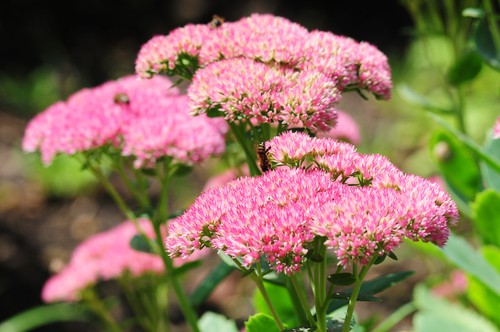
This succulent comes in a range of colours, including pink, blue, silver and bright green. You can get a creeping Sedum or a tall Sedum. The tall Sedum produces long stems where clusters of colourful flowers are produced. The creeping Sedum is better for outdoor spaces like rock gardens or along the roof because it will grow outwards.
13. Agave ovatifolia – Whale’s Tongue Agave
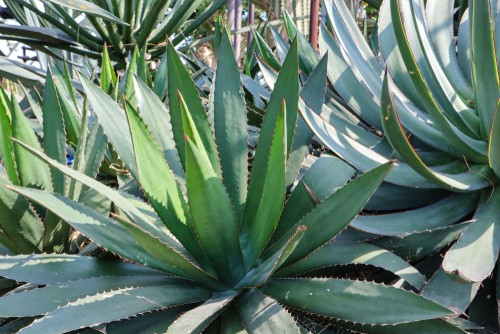
Grown in the Mexican mountains at high elevation, it gets its name because the leaves are broad and flat and resemble that of a whale’s tongue. These plants can grow up to a metre and a half, both wide and tall. Given that they are so large they do best when grown outside.
14. Parodia magnifica – Ball Cactus
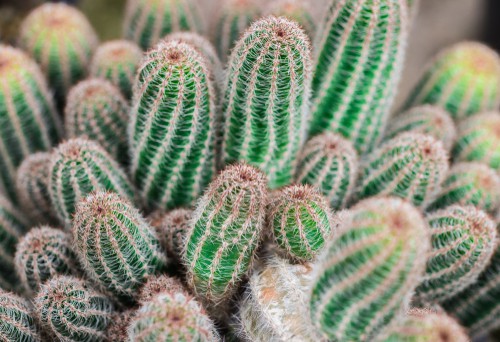
If you want something with a unique shape, the ‘Ball Cactus’ resembles a hot air balloon. It produces small clusters of flowers that are yellow, and it provides a beautiful desert vibe to any garden. It can grow directly in the ground or in containers.
15. Echeveria pulvinata – Plush Plant
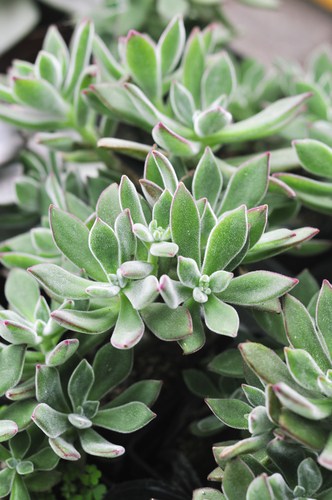
This plant is beautiful. It is a native of southern Mexico with fine white hairs that truly glow in the sunlight, giving it a silvery aesthetic. The blooms are orange and yellow and take on the same colours as a sunset. This plant is perfect for a garden that has partial shade because it has a preference for partial shade, unlike most succulents. It also does well when placed in containers or grown directly in the ground.
16. Echeveria – Dudleya
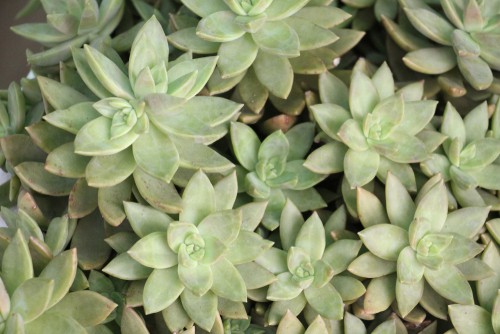
These plants create rosettes, meaning the leaves take on a circular arrangement. When well-cared-for, they can live for over 100 years. They grow naturally on hills so their leaves don’t get any water, so, no matter where you grow them, be sure to avoid getting their leaves wet when you water.
17. Cotyledon orbiculata – Pig’s Ear
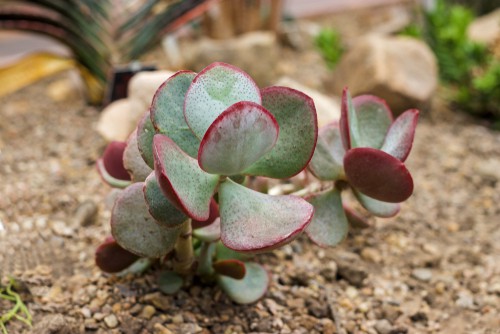
This plant gets its name because of the thick, oval leaves that are adorned with red along the edges. The flowers produced are yellow and red, and these appear from the end of summer to the beginning of autumn. They can reach over a metre in height once fully established, which makes them better suited for outdoor areas, especially rock gardens or succulent beds. They don’t need a lot of water, but they do take up a lot of space, so be sure to accommodate.
18. Aeonium arboreum
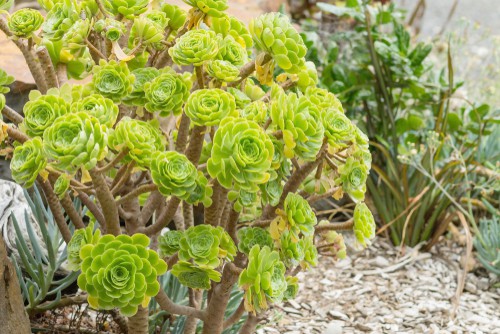
Come winter this plant will give you stunning yellow flowers that offer unexpected contrast to the otherwise dark foliage and bland winter weather. This one grows best outdoors because it does prefer full sun and if you grow more than one, be sure to grow them in clusters to create maximum impact.
19. Aeonium davidbramwellii – Sunburst
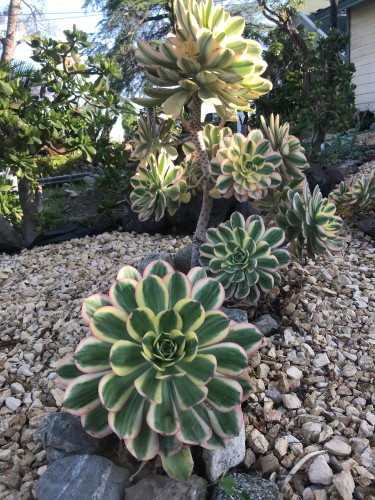
The leaves are variegated with white, yellow, and green, so it is considered a tri-coloured plant. As a hybrid, it’s one of the more popular succulents with rosettes that produce stunning white flowers in summer. This one does grow quite remarkably, especially in coastal areas.
20. Aloe aristata – Torch Plant
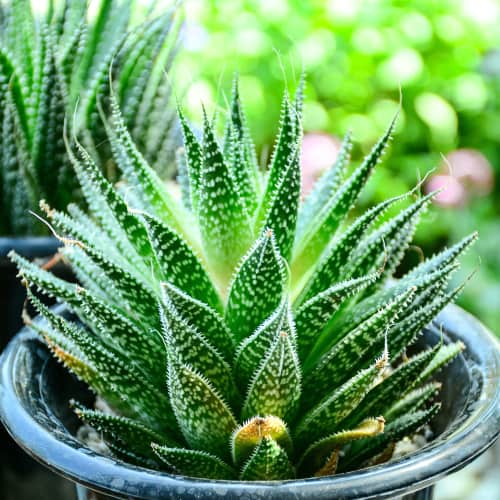
Also commonly known as ‘Torch Plant’, this succulent has leaves that start off in a shade of light green and in the sun turn darker. They produce bright orange blossoms, and the combination of leaves and flowers looks similar to a torch. When properly cared for this plant can grow 3 metres (or higher) and 20cm wide, so they do offer a stunning display if you have ample space to grow it.
Now you know the best option for indoor and outdoor succulents. Find something that works best for your space, your colour preference, and your style.

